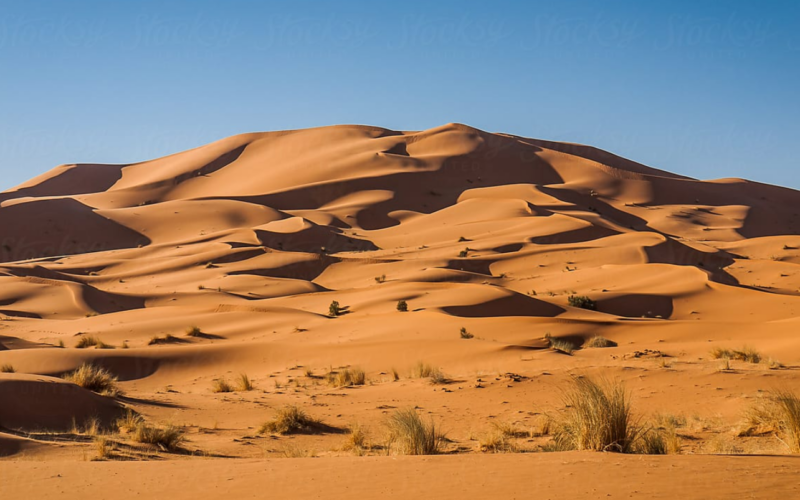In a fascinating exploration of natural wonders, scientists have delved into the mysteries surrounding a colossal, migrating sand dune located in Morocco. The discovery of this immense geological formation, known as a star dune, has captivated the scientific community, offering insights into the dynamic processes shaping Earth’s landscapes and ecosystems.
The star dune, situated in the remote desert expanse of Morocco’s western Sahara region, stands as a testament to the awe-inspiring power of nature. Stretching over vast expanses of sand, its imposing stature and intricate geometric configuration distinguish it as a remarkable feature of the natural world.
Researchers have long been intrigued by the enigmatic behavior of star dunes, which exhibit a unique ability to migrate across the landscape, reshaping themselves over time. Unlike stationary dunes, which remain relatively fixed in position, star dunes are characterized by their mobility, driven by prevailing wind patterns and the redistribution of sand grains.
The discovery of the Moroccan star dune has provided scientists with a rare opportunity to study these dynamic processes up close, shedding light on the mechanisms driving dune formation, migration, and evolution. Through a combination of field observations, satellite imaging, and computer modeling, researchers have begun to unravel the complex interplay of factors influencing the behavior of these massive sand formations.
One of the key factors contributing to the mobility of star dunes is wind dynamics, with prevailing winds exerting a profound influence on the direction and speed of dune movement. In the case of the Moroccan star dune, researchers have observed how seasonal variations in wind patterns can trigger shifts in its position, leading to the gradual displacement of vast quantities of sand over time.
Additionally, the shape and orientation of the star dune itself play a crucial role in determining its movement patterns. As sand accumulates on the windward side of the dune, it creates a steep slope that eventually reaches a critical angle, causing the sand to cascade down the leeward side in a process known as avalanching. This continuous cycle of deposition and erosion contributes to the dynamic nature of star dunes, allowing them to migrate across the landscape over extended periods.
Beyond their intrinsic scientific value, star dunes also play a vital role in shaping local ecosystems and supporting biodiversity in arid regions. The shifting sands create a mosaic of habitats that are home to a diverse array of plant and animal species uniquely adapted to desert environments. Moreover, the deposition of sand by migrating dunes can help stabilize surrounding soils, mitigating the effects of erosion and desertification.
Despite the progress made in understanding the behavior of star dunes, many mysteries still remain, underscoring the need for continued research and exploration. Scientists hope that by unraveling the secrets of these enigmatic formations, they can gain deeper insights into the complex interplay of geological, meteorological, and ecological processes that shape our planet’s landscapes.
As researchers continue to study the Moroccan star dune and similar formations around the world, they are poised to unlock new discoveries that will enhance our understanding of Earth’s dynamic systems and inform efforts to conserve and manage fragile desert ecosystems. In the vast and ever-changing tapestry of nature, the mysteries of the star dune stand as a testament to the enduring fascination and boundless complexity of the natural world.








